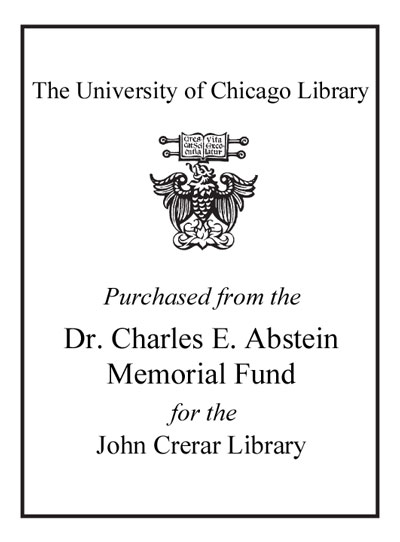Bayesian data analysis /
Saved in:
| Author / Creator: | Gelman, Andrew, author. |
|---|---|
| Edition: | Third edition. |
| Imprint: | Boca Raton : CRC Press, 2013. |
| Description: | xiv, 667 pages : illustrations ; 27 cm. |
| Language: | English |
| Series: | Chapman & Hall/CRC texts in statistical science Texts in statistical science. |
| Subject: | |
| Format: | Print Book |
| URL for this record: | http://pi.lib.uchicago.edu/1001/cat/bib/10388148 |
Table of Contents:
- Preface
- Part I. Fundamentals of Bayesian Inference
- 1. Probability and inference
- 1.1. The three steps of Bayesian data analysis
- 1.2. General notation for statistical inference
- 1.3. Bayesian inference
- 1.4. Discrete probability examples: genetics and spell checking
- 1.5. Probability as a measure of uncertainty
- 1.6. Example of probability assignment: football point spreads
- 1.7. Example: estimating the accuracy of record linkage
- 1.8. Some useful results from probability theory
- 1.9. Computation and software
- 1.10. Bayesian inference in applied statistics
- 1.11. Bibliographic note
- 1.12. Exercises
- 2. Single-parameter models
- 2.1. Estimating a probability from binomial data
- 2.2. Posterior as compromise between data and prior information
- 2.3. Summarizing posterior inference
- 2.4. Informative prior distributions
- 2.5. Estimating a normal mean with known variance
- 2.6. Other standard single-parameter models
- 2.7. Example: informative prior distribution for cancer rates
- 2.8. Noninformative prior distributions
- 2.9. Weakly informative prior distributions
- 2.10. Bibliographic note
- 2.11. Exercises
- 3. Introduction to multiparameter models
- 3.1. Averaging over 'nuisance parameters'
- 3.2. Normal data with a noninformative prior distribution
- 3.3. Normal data with a conjugate prior distribution
- 3.4. Multinomial model for categorical data
- 3.5. Multivariate normal model with known variance
- 3.6. Multivariate normal with unknown mean and variance
- 3.7. Example: analysis of a bioassay experiment
- 3.8. Summary of elementary modeling and computation
- 3.9. Bibliographic note
- 3.10. Exercises
- 4. Asymptotics and connections to non-Bayesian approaches
- 4.1. Normal approximations to the posterior distribution
- 4.2. Large-sample theory
- 4.3. Counterexamples to the theorems
- 4.4. Frequency evaluations of Bayesian inferences
- 4.5. Bayesian interpretations of other statistical methods
- 4.6. Bibliographic note
- 4.7. Exercises
- 5. Hierarchical models
- 5.1. Constructing a parameterized prior distribution
- 5.2. Exchangeability and setting up hierarchical models
- 5.3. Fully Bayesian analysis of conjugate hierarchical models
- 5.4. Estimating exchangeable parameters from a normal model
- 5.5. Example: parallel experiments in eight schools
- 5.6. Hierarchical modeling applied to a meta-analysis
- 5.7. Weakly informative priors for hierarchical variance parameters
- 5.8. Bibliographic note
- 5.9. Exercises
- Part II. Fundamentals of Bayesian Data Analysis
- 6. Model checking
- 6.1. The place of model checking in applied Bayesian statistics
- 6.2. Do the inferences from the model make sense?
- 6.3. Posterior predictive checking
- 6.4. Graphical posterior predictive checks
- 6.5. Model checking for the educational testing example
- 6.6. Bibliographic note
- 6.7. Exercises
- 7. Evaluating, comparing, and expanding models
- 7.1. Measures of predictive accuracy
- 7.2. Information criteria and cross-validation
- 7.3. Model comparison based on predictive performance
- 7.4. Model comparison using Bayes factors
- 7.5. Continuous model expansion
- 7.6. Implicit assumptions and model expansion: an example
- 7.7. Bibliographic note
- 7.8. Exercises
- 8. Modeling accounting for data collection
- 8.1. Bayesian inference requires a model for data collection
- 8.2. Data-collection models and ignoreability
- 8.3. Sample surveys
- 8.4. Designed experiments
- 8.5. Sensitivity and the role of randomization
- 8.6. Observational studies
- 8.7. Censoring and truncation
- 8.8. Discussion
- 8.9. Bibliographic note
- 8.10. Exercises
- 9. Decision analysis
- 9.1. Bayesian decision theory in different contexts
- 9.2. Using regression predictions: incentives for telephone surveys
- 9.3. Multistage decision making: medical screening
- 9.4. Hierarchical decision analysis for radon measurement
- 9.5. Personal vs. institutional decision analysis
- 9.6. Bibliographic note
- 9.7. Exercises
- Part III. Advanced Computation
- 10. Introduction to Bayesian computation
- 10.1. Numerical integration
- 10.2. Distributional approximations
- 10.3. Direct simulation and rejection sampling
- 10.4. Importance sampling
- 10.5. How many simulation draws are needed?
- 10.6. Computing environments
- 10.7. Debugging Bayesian computing
- 10.8. Bibliographic note
- 10.9. Exercises
- 11. Basics of Markov chain simulation
- 11.1. Gibbs sampler
- 11.2. Metropolis and Metropolis-Hastings algorithms
- 11.3. Using Gibbs and Metropolis as building blocks
- 11.4. Inference and assessing convergence
- 11.5. Effective number of simulation draws
- 11.6. Example: hierarchical normal model
- 11.7. Bibliographic note
- 11.8. Exercises
- 12. Computationally efficient Markov chain simulation
- 12.1. Efficient Gibbs samplers
- 12.2. Efficient Metropolis jumping rules
- 12.3. Further extensions to Gibbs and Metropolis
- 12.4. Hamiltonian Monte Carlo
- 12.5. Hamiltonian dynamics for a simple hierarchical model
- 12.6. Stan: developing a computing environment
- 12.7. Bibliographic note
- 12.8. Exercises
- 13. Modal and distributional approximations
- 13.1. Finding posterior modes
- 13.2. Boundary-avoiding priors for modal summaries
- 13.3. Normal and related mixture approximations
- 13.4. Finding marginal posterior modes using EM
- 13.5. Approximating conditional and marginal posterior densities
- 13.6. Example: hierarchical normal model (continued)
- 13.7. Variational inference
- 13.8. Expectation propagation
- 13.9. Other approximations
- 13.10. Unknown normalizing factors
- 13.11. Bibliographic note
- 13.12. Exercises
- Part IV. Regression Models
- 14. Introduction to regression models
- 14.1. Conditional modeling
- 14.2. Bayesian analysis of the classical regression model
- 14.3. Regression for causal inference: incumbency in congressional elections
- 14.4. Goals of regression analysis
- 14.5. Assembling the matrix of explanatory variables
- 14.6. Regularization and dimension reduction for multiple predictors
- 14.7. Unequal variances and correlations
- 14.8. Including numerical prior information
- 14.9. Bibliographic note
- 14.10. Exercises
- 15. Hierarchical linear models
- 15.1. Regression coefficients exchangeable in batches
- 15.2. Example: forecasting U.S. presidential elections
- 15.3. Interpreting a normal prior distribution as additional data
- 15.4. Varying intercepts and slopes
- 15.5. Computation: batching and transformation
- 15.6. Analysis of variance and the batching of coefficients
- 15.7. Hierarchical models for batches of variance components
- 15.8. Bibliographic note
- 15.9. Exercises
- 16. Generalized linear models
- 16.1. Standard generalized linear model likelihoods
- 16.2. Working with generalized linear models
- 16.3. Weakly informative priors for logistic regression
- 16.4. Example: hierarchical Poisson regression for police stops
- 16.5. Example: hierarchical logistic regression for political opinions
- 16.6. Models for multivariate and multinomial responses
- 16.7. Loglinear models for multivariate discrete data
- 16.8. Bibliographic note
- 16.9. Exercises
- 17. Models for robust inference
- 17.1. Aspects of robustness
- 17.2. Overdispersed versions of standard probability models
- 17.3. Posterior inference and computation
- 17.4. Robust inference and sensitivity analysis for the eight schools
- 17.5. Robust regression using t-distributed errors
- 17.6. Bibliographic note
- 17.7. Exercises
- 18. Models for missing data
- 18.1. Notation
- 18.2. Multiple imputation
- 18.3. Missing data in the multivariate normal and t models
- 18.4. Example: multiple imputation for a series of polls
- 18.5. Missing values with counted data
- 18.6. Example: an opinion poll in Slovenia
- 18.7. Bibliographic note
- 18.8. Exercises
- Part V. Nonlinear and Nonparametric Models
- 19. Parametric nonlinear models
- 19.1. Example: serial dilution assay
- 19.2. Example: population toxicokinetics
- 19.3. Bibliographic note
- 19.4. Exercises
- 20. Basis function models
- 20.1. Splines and weighted sums of basis functions
- 20.2. Basis selection and shrinkage of coefficients
- 20.3. Non-normal models and multivariate regression surfaces
- 20.4. Bibliographic note
- 20.5. Exercises
- 21. Gaussian process models
- 21.1. Gaussian process regression
- 21.2. Example: birthdays and birthdates
- 21.3. Latent Gaussian process models
- 21.4. Functional data analysis
- 21.5. Density estimation and regression
- 21.6. Bibliographic note
- 21.7. Exercises
- 22. Finite mixture models
- 22.1. Setting up and interpreting mixture models
- 22.2. Example: reaction times and schizophrenia
- 22.3. Label switching and posterior computation
- 22.4. Unspecified number of mixture components
- 22.5. Mixture models for classification and regression
- 22.6. Bibliographic note
- 22.7. Exercises
- 23. Dirichlet process models
- 23.1. Bayesian histograms
- 23.2. Dirichlet process prior distributions
- 23.3. Dirichlet process mixtures
- 23.4. Beyond density estimation
- 23.5. Hierarchical dependence
- 23.6. Density regression
- 23.7. Bibliographic note
- 23.8. Exercises
- A. Standard probability distributions
- A.1. Continuous distributions
- A.2. Discrete distributions
- A.3. Bibliographic note
- B. Outline of proofs of limit theorems
- B.1. Bibliographic note
- C. Computation in R and Stan
- C.1. Getting started with R and Stan
- C.2. Fitting a hierarchical model in Stan
- C.3. Direct simulation, Gibbs, and Metropolis in R
- C.4. Programming Hamiltonian Monte Carlo in R
- C.5. Further comments on computation
- C.6. Bibliographic note
- References
- Author Index
- Subject Index


